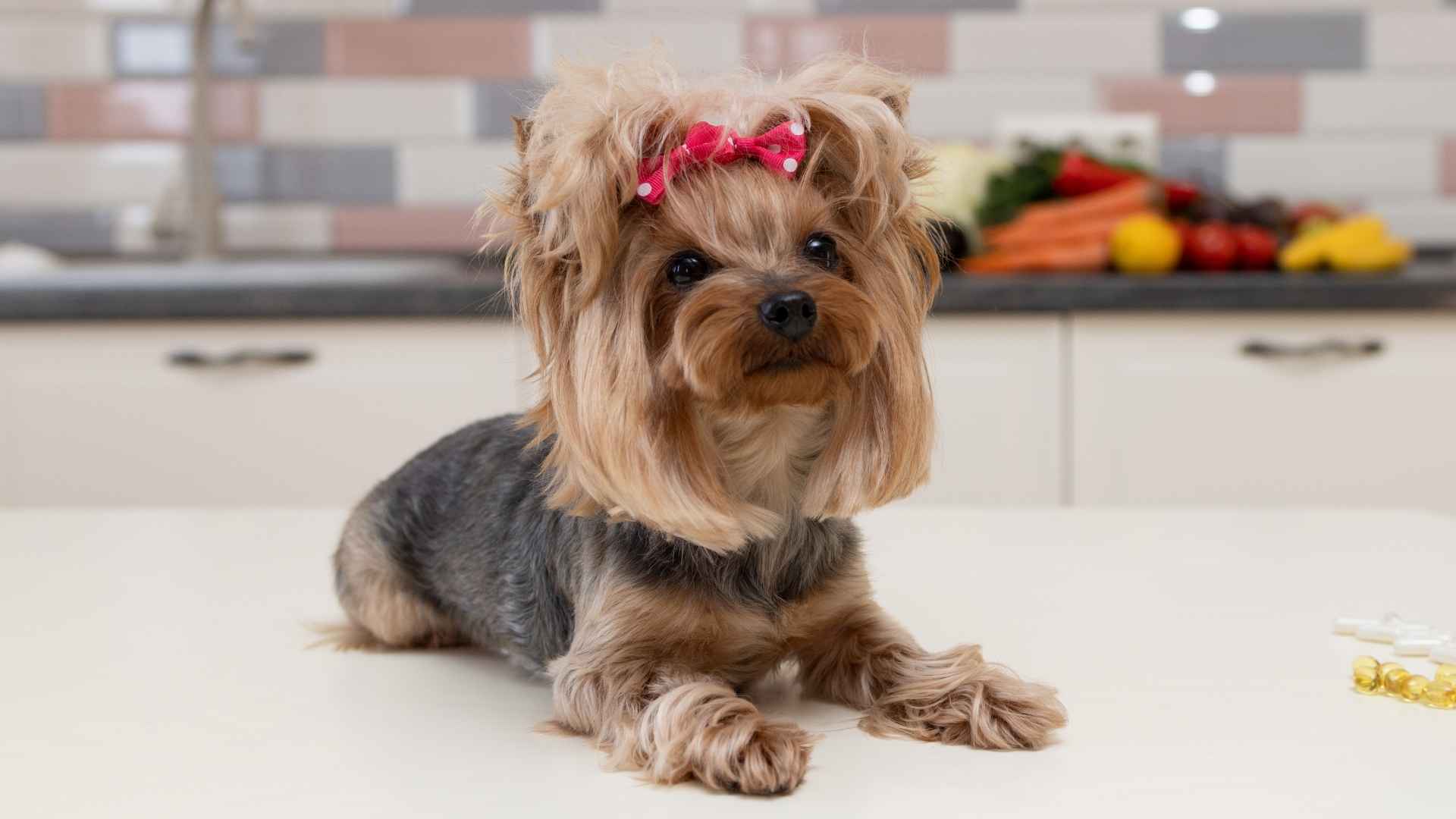Looking for a small hypoallergenic dog breed? You’re not alone! Many pet lovers adore dogs, but could do without the fur tumbleweeds floating around the house. While no dog is completely non-shedding or 100% hypoallergenic, some small breeds come pretty close. These pups shed so little that they’re often a great match for allergy sufferers or anyone who just doesn’t want to vacuum daily.
The term “hypoallergenic” can be a little misleading because all dogs shed and produce dander to some extent. However, some breeds have fine hair instead of fur, or simply lose far less of it, making them cleaner companions in more ways than one. It is important to note that not just the coat, a dog’s saliva and dander can trigger an allergic reaction.
Whether you’re dealing with allergies or just want a low-maintenance grooming routine, there’s a perfect small, low-shedding dog for you. In this guide, we’re diving into the top small dog breeds that don’t shed—or barely shed at all. Let’s find your new best friend!
Small Dog Breeds that Don’t Shed
1. Maltese
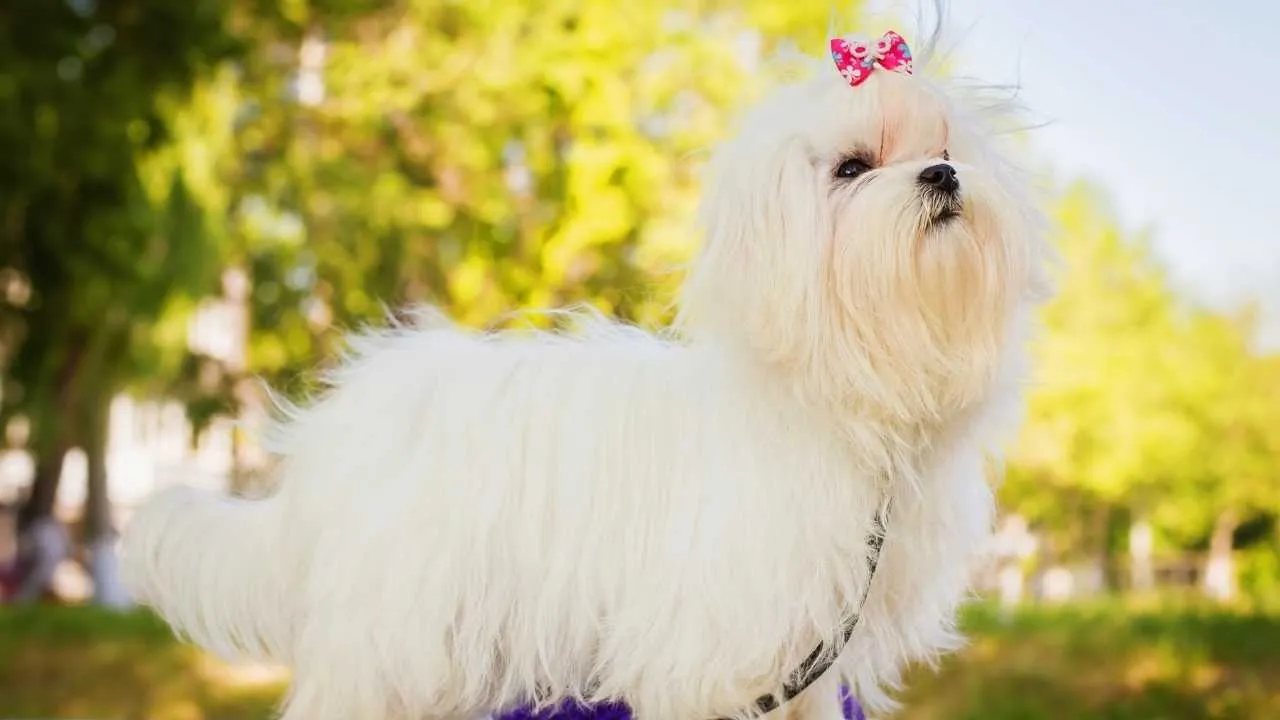
The Maltese is a charming small dog breed known for its luxurious white coat and lively personality. Originating from the Mediterranean island of Malta, this ancient breed has a long history as a cherished companion, with mentions in Greek and Roman texts.
The Maltese is a truly petite pup, with both males and females sharing the same tiny frame. On average, they stand just 7 to 9 inches tall and typically weigh under 7 pounds.
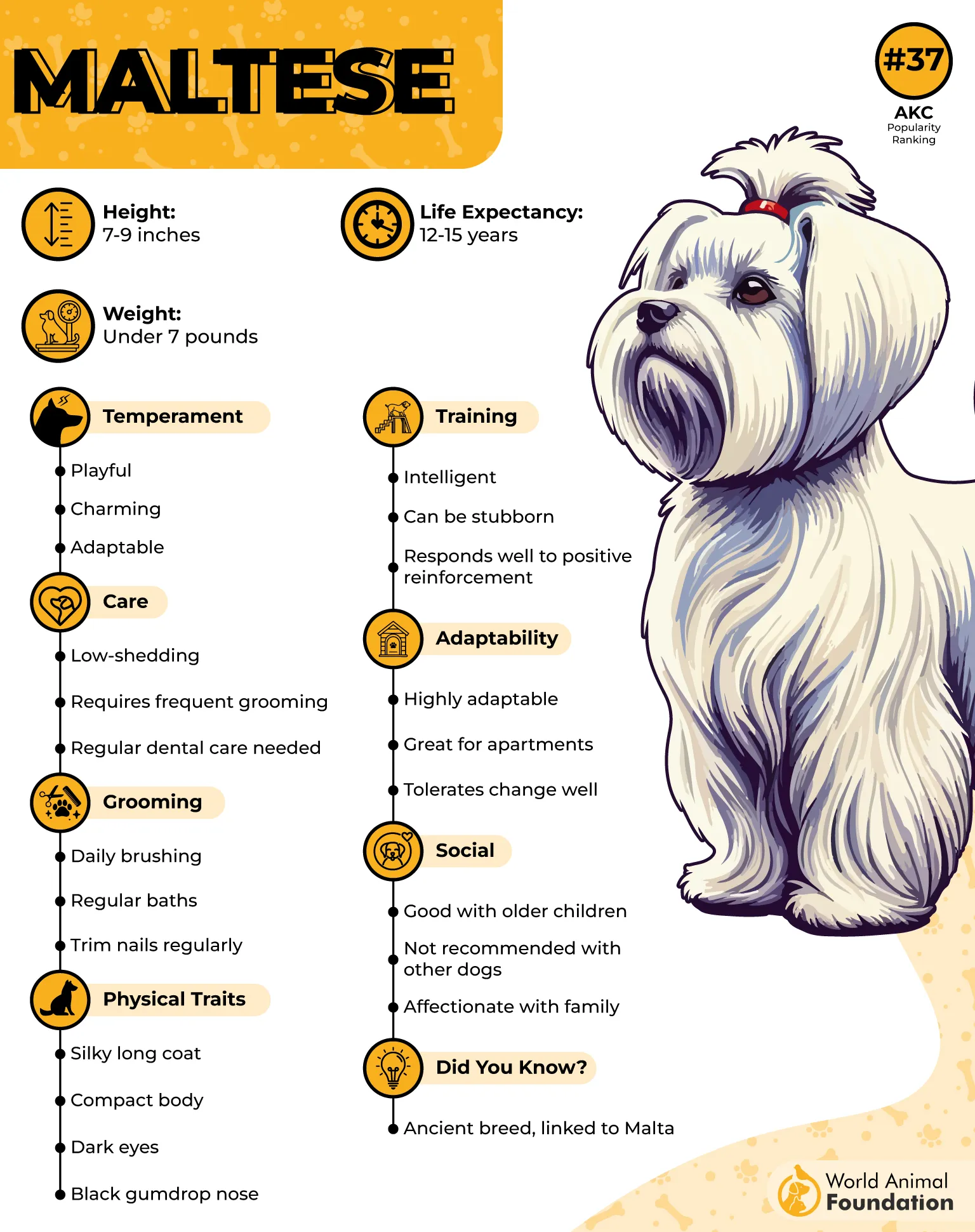
As noted by PetMD, these tiny pups are often labeled “hypoallergenic” because they lack a dense undercoat, the main culprit behind heavy shedding. Instead, they have a single, luxurious coat that grows long and smooth, giving them their signature elegant look. Their fur comes in three shades: all white, white and tan, or white and lemon.
The Maltese doesn’t shed much, but its coat needs daily brushing and regular baths to prevent tangles. Many owners choose a short trim for easier upkeep, while others prefer a long, elegant look. A professional groomer can help with either style.
Beyond grooming, Maltese pups thrive on companionship and routine. They’re playful, intelligent, and respond well to positive reinforcement. Regular exercise, mental stimulation, and early socialization go a long way in shaping a well-rounded, happy dog.
2. Toy Poodle
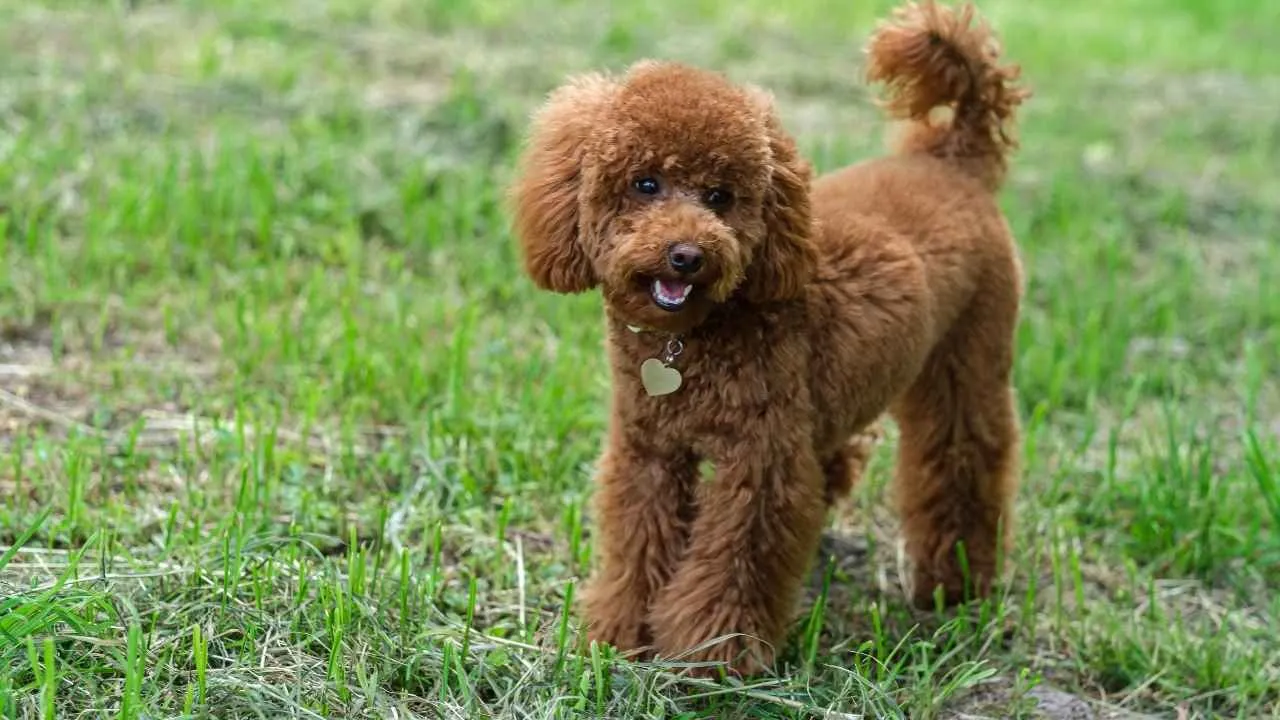
Don’t let their dainty size fool you—Toy Poodles are brimming with personality. Standing no taller than 10 inches and weighing just 4 to 6 pounds, these little dogs are highly intelligent, playful, and people-oriented – traits that make them excellent companions for families.
Though often linked to France, Poodles originally hail from Germany, where the Standard Poodle was bred as a duck retriever. The Toy and Miniature varieties were later developed by selectively breeding smaller Poodles. Despite their size difference, all Poodles share the same signature traits—curly coats, high smarts, and a love of performing.
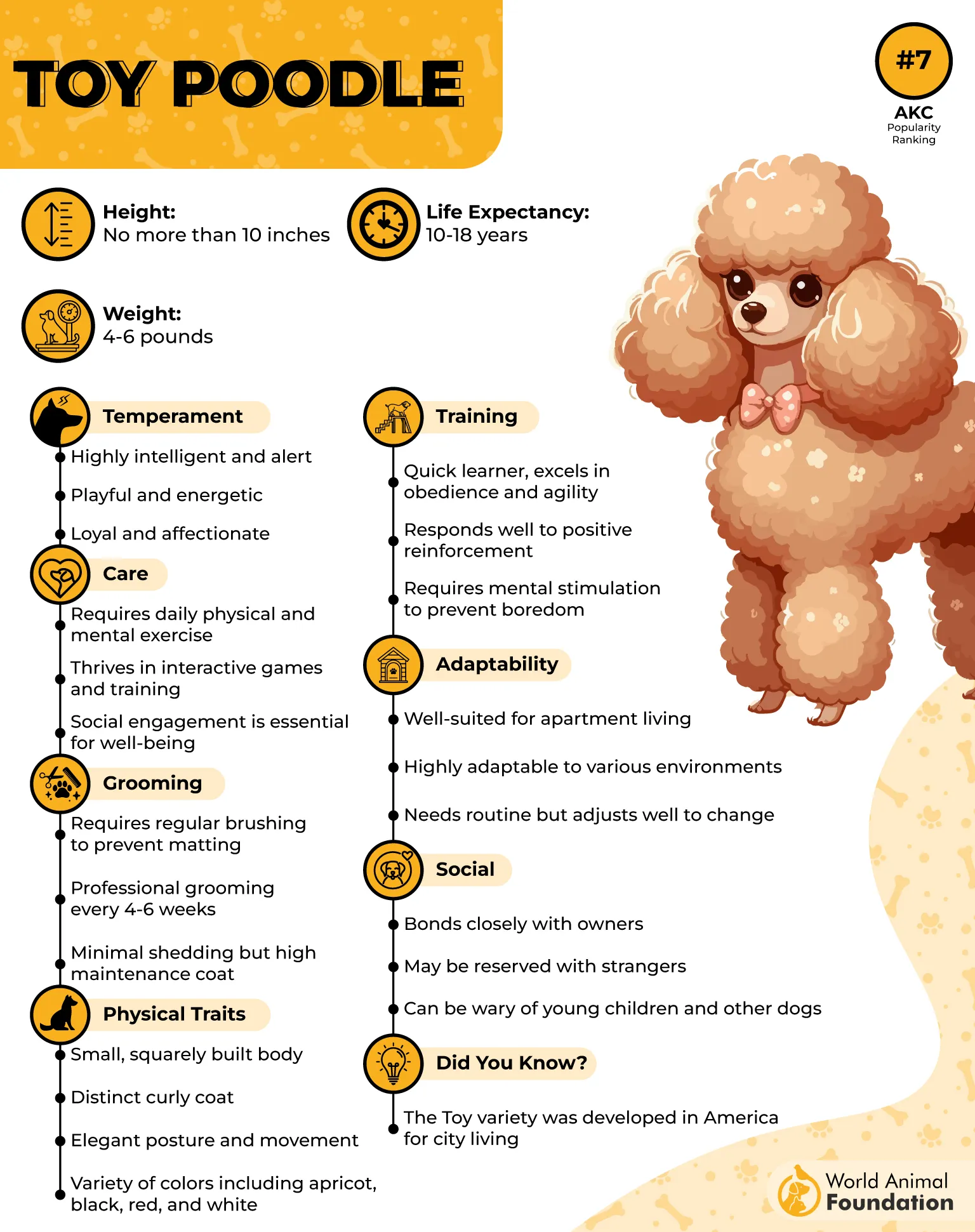
The Toy Poodle’s tight, woolly coat doesn’t shed much, making them a popular pick for allergy-sensitive households. However, no dog is truly hypoallergenic. Because their coat grows continuously, they’ll need regular trims every 4–6 weeks and frequent grooming to stay tangle-free.
Toy Poodles are smart, eager to please, and easy to train—even for first-time owners. They’re affectionate and curious but can be sensitive to loud noises or long periods alone. Early socialization and consistent routines help ease their anxiety.
These little dogs love attention and thrive around their humans. They’re great family pets, but kids should learn to handle them gently, as Toy Poodles are delicate. Without enough stimulation, they may chew, dig, or develop separation anxiety.
Beneath their refined appearance lies a playful, energetic spirit. Toy Poodles enjoy muddy fun and outdoor adventures as much as performing tricks or agility. They shine brightest when they’re the center of attention.
3. Yorkshire Terrier
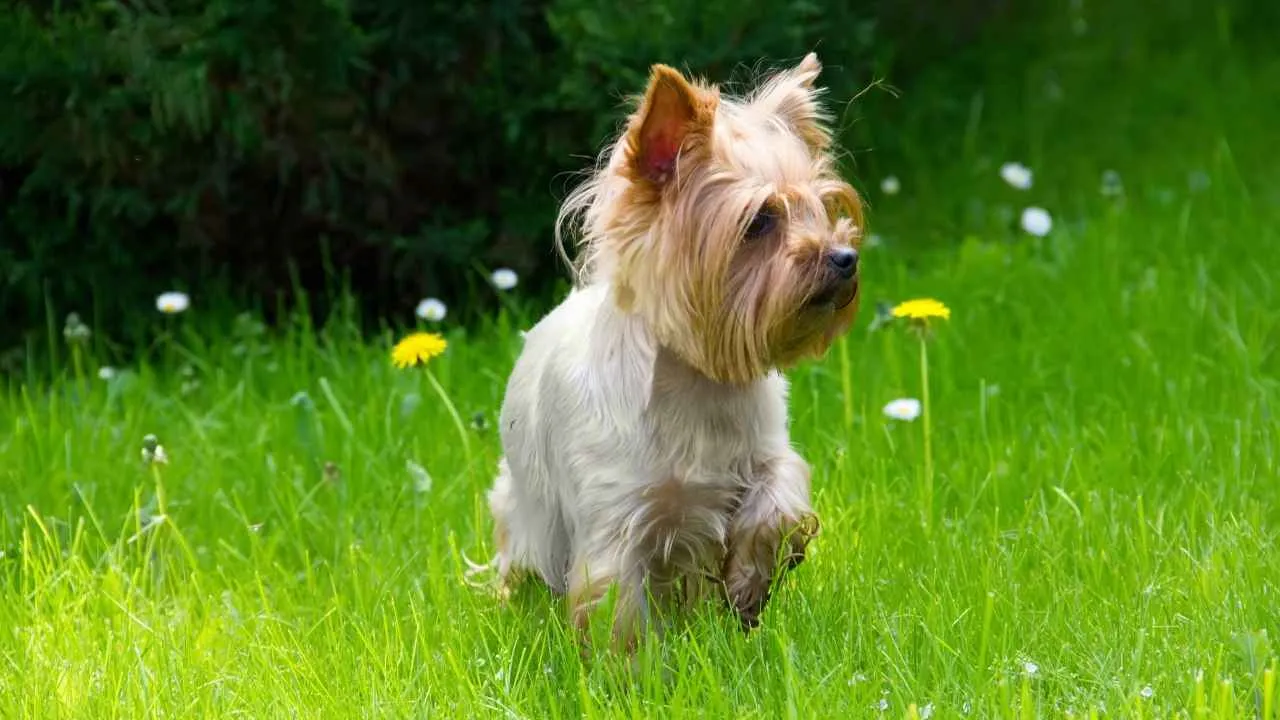
Yorkshire Terriers, or “Yorkies,” may be tiny in size, but they’re bursting with personality. These feisty little dogs are known for their adventurous spirit and confident attitude, often acting like much bigger dogs in a compact body.
Bred originally in Yorkshire, England, these pups got their start as rat catchers in textile mills, though today they’re beloved lap dogs and loyal companions.
Yorkies stand just 7 to 8 inches tall and usually weigh around 7 pounds, putting them solidly in the toy breed category. But don’t let that fool you—they’ve earned the nickname “tomboy toy” thanks to their bold nature and high energy.
They’re smart dogs, affectionate with their people, and naturally alert, which makes them excellent watchdogs and travel buddies.
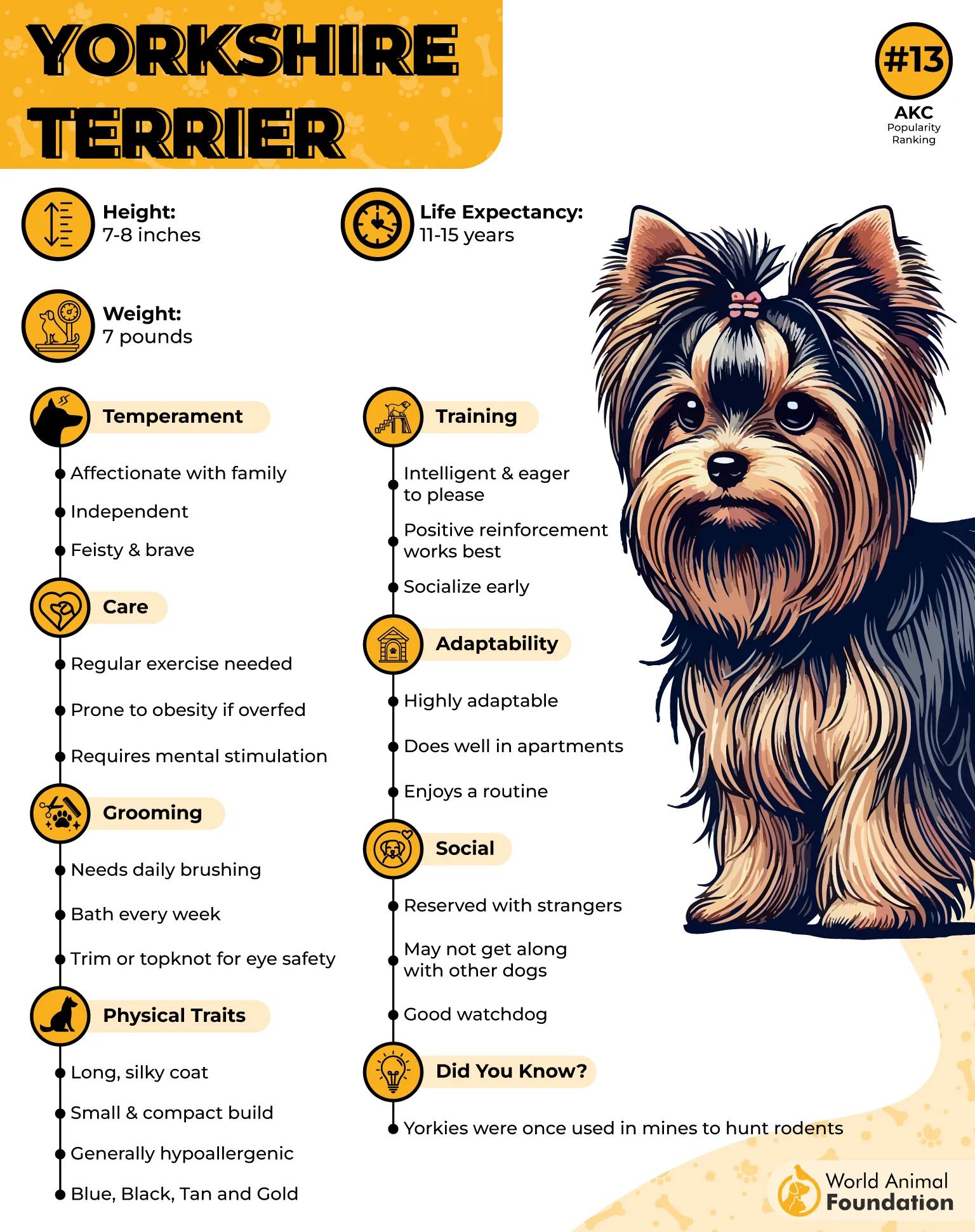
One of the most eye-catching features of the breed is its luxurious, silky coat. Yorkies often have flowing hair in hues of steel blue and tan or golden tones. In dog shows, their coats are groomed to the floor and tied in top knots to keep hair out of their eyes.
This signature style isn’t just cute—it’s practical, too! For easier upkeep, many pet parents opt for a “puppy cut,” which keeps their coat short and tangle-free.
Though Yorkies don’t have an undercoat, meaning they shed very little, their hair is similar to human hair and requires daily brushing to prevent mats, states AKC.
Regular grooming, paired with their natural cleanliness, makes them a great choice for tidy households and allergy-prone pet lovers.
Did You Know?
Yorkies are not just beautiful and bold—they’ve also broken records. Several Yorkies have held titles as the smallest dogs in the world. The tiniest of them all was Sylvia, who stood only 2.5 inches tall and weighed just four ounces!
4. Bichon Frise
Bichon Frises are small, cheerful pups that bring a big personality wrapped in a fluffy white coat. Known for being hypoallergenic, these curly-coated companions are a great match for families, singles, and seniors alike, especially those looking for a dog that doesn’t shed much.
Originally from the Mediterranean, Bichons once charmed Renaissance royalty and today continue to win hearts as loving companions, therapy dogs, and even show dogs.
Standing just 9 to 12 inches tall and weighing around 12–18 pounds, the Bichon Frise may be petite, but it’s packed with energy and charm. Their bright, round eyes and curious expression give them a playful look that matches their affectionate personality.
These dogs are social butterflies—they love people, get along with other pets, and tend to do well with children when properly socialized from a young age.
As noted by PetMD, Bichons don’t shed much, but their double coat traps loose hairs and mats easily without regular brushing. Professional grooming every few weeks helps maintain a healthy, tangle-free coat, and don’t forget their ears, which need trimming to prevent painful mats and potential issues.
Lively and affectionate, Bichons love attention and thrive in active homes. Without enough play or stimulation, they may bark or chew out of boredom. With proper training and affection, they make cheerful, cuddly companions.
5. Shih Tzu
The Shih Tzu is a tiny, ancient breed once favored by Tibetan monks and Chinese royalty. Originally palace guardians with lion-like looks and alert barks, they arrived in England in the 1930s and quickly gained popularity for their charm and companionship.
Weighing 9–16 pounds and standing around 10 inches tall, Shih Tzus have a big presence in a small frame. Their round faces, expressive eyes, and flowing double, dense coats—seen in colors like gold, white, black, and gray—give them a regal, lovable look.
Daily brushing is essential to maintain their long, silky coat, especially around the mustache and topknot. Regular baths, nail trims, ear cleaning, and eye care are key. Many owners prefer a low-maintenance “puppy trim” for easier grooming.
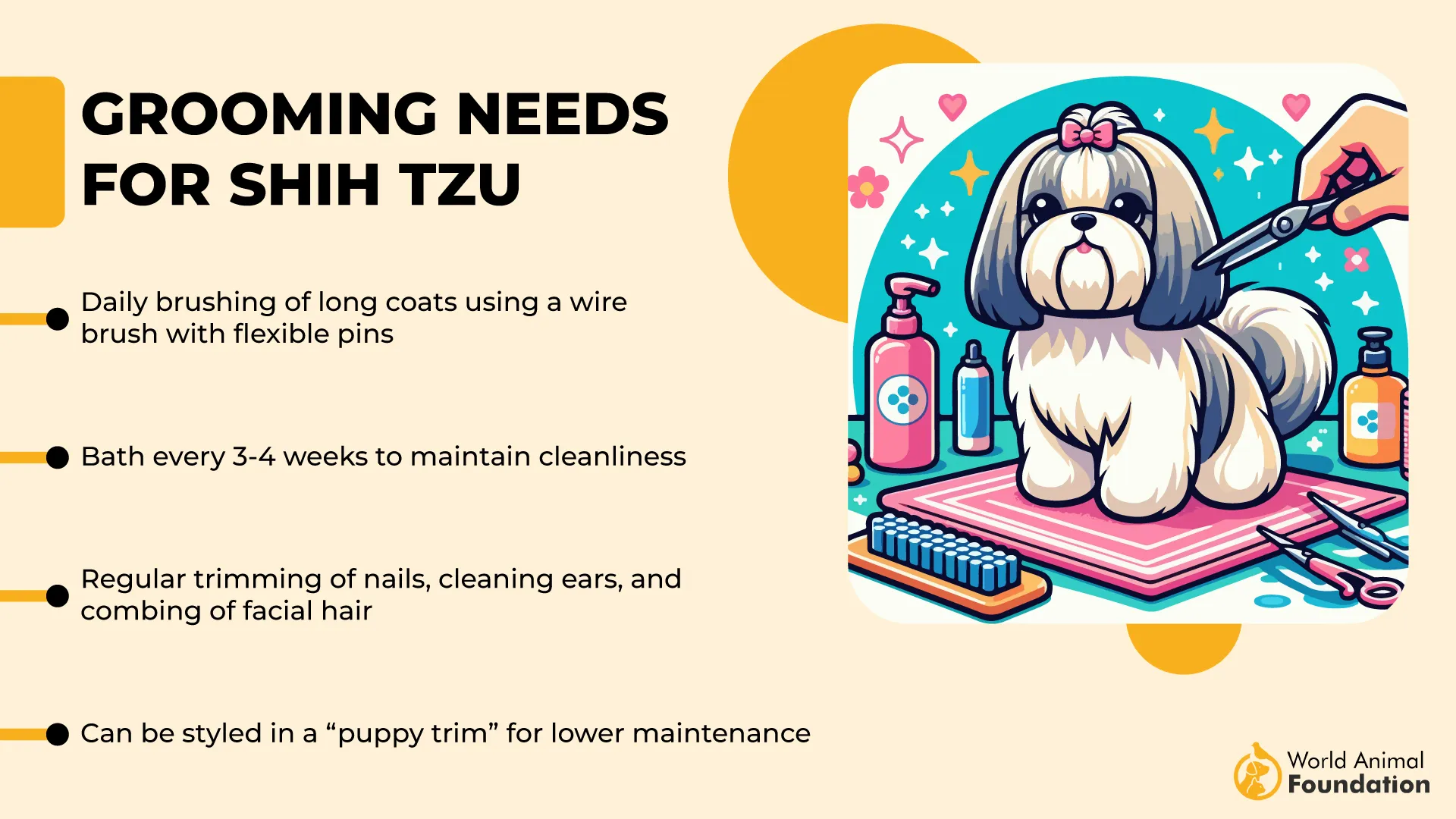
Lively and affectionate, Shih Tzus enjoy cuddles, short brisk walks, and social time. They’re good with other pets and gentle kids, though they may get vocal if play is too rough. Smart and loyal, they make great companions with patient training.
6. Havanese
The Havanese, affectionately known as Cuba’s national dog, is a compact charmer with a heart full of affection. Originally bred as lap dogs for Cuban nobility, these lovable fluffballs now thrive in homes around the world—and have easily earned their spot among the most popular breeds in the U.S.
Havanese dogs are cheerful and social and get along well with kids, adults, and other pets. Deeply attached to their humans, they don’t tolerate being left alone and may develop separation anxiety. Their gentle, playful nature makes them great with children when handled gently.
One of the perks of living with a Havanese is that they shed minimally. Since they lack an undercoat, you won’t find tufts of fur all over your home. While some light seasonal shedding may occur, especially during shifts between winter and summer, it’s typically very manageable, states Purina.
Factors like coat color, health, and diet can influence shedding a bit (particolored Havanese may shed slightly more), but overall, they’re a great choice for people looking for a low-shedding companion.
Though they shed little, Havanese dogs need regular grooming. Their long, wavy coat type—seen in colors like cream, chocolate, black, and white—requires weekly brushing to prevent mats and maintain shine. Occasional baths and cleanups keep them fresh, especially for active pups.
7. Chinese Crested
The Chinese Crested is a unique toy breed that comes in two varieties: Hairless and Powderpuff. Both types can be born in the same litter, with the main difference being the coat. Hairless Cresteds have smooth, soft skin with tufts of silky hair on the head, tail, and ankles, while Powder puffs sport a full veil of soft, flowing hair across their entire body.
These little dogs also come in two build types: the Deer type, which is fine-boned and elegant, and the Cobby type, which is sturdier with more bone mass. Either way, they’re athletic and lively companions who are surprisingly agile and love to stay active.
Standing around 11–13 inches tall and weighing 8–12 pounds, they’re ideal for pet parents on the go—portable, light, and always ready for an adventure.
Cresteds are not only cute but come in a wide range of colors, including apricot, blue, chocolate, cream, and even striking mixes like black-white-tan or pink-and-slate. Their skin or fur may be patterned with spots or white markings, adding to their eye-catching charm.
While the Hairless variety requires sun protection and occasional skin care, Powderpuffs benefit from regular brushing to prevent tangles in their soft coat.
Friendly and people-oriented, the Chinese Crested is happiest curled up in your lap or trotting beside you. They thrive on human interaction and can get lonely without it. Known for being bright and eager to please, they respond well to training, especially when it’s fun and full of praise. Whether they’re learning new tricks or just soaking up affection, Cresteds make cheerful, devoted companions.
Fun Fact:
The Chinese Crested has a rich history as a shipboard ratter, valued for its minimal shedding and being less prone to fleas. Legends claimed their warm skin could cure fevers, but their true gift is easing stress with their affectionate nature.
Conclusion
When choosing small dog breeds that don’t shed, it’s important to consider coat types—from the soft-coated Wheaten Terrier’s fine coat to the wiry coat of the Scottish Terrier or the rough coat of the Cairn Terrier. Breeds like the Miniature Schnauzer, West Highland White Terrier, and Silky Terrier offer manageable grooming.
Rare breeds such as the Afghan hound, Mexican Hairless, and Bedlington Terrier provide unique options for allergy-sensitive homes. Although some large hypoallergenic dogs like the Portuguese Water Dog, Irish Water Spaniel, and Giant Schnauzer also fit the low-shedding category, small breeds often make the best dogs for those seeking companionship without excessive shedding.
Whether you prefer the playful Miniature Poodles or the independent Brussels Griffon, understanding coat types—from short coats to silky or rough coats—helps in finding the perfect pup for allergy-prone individuals.


